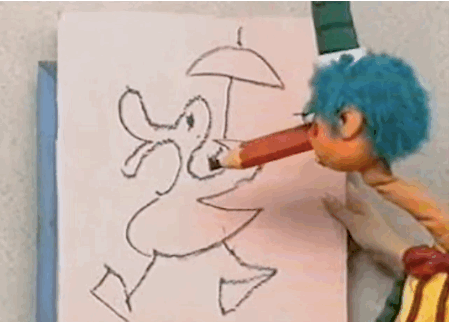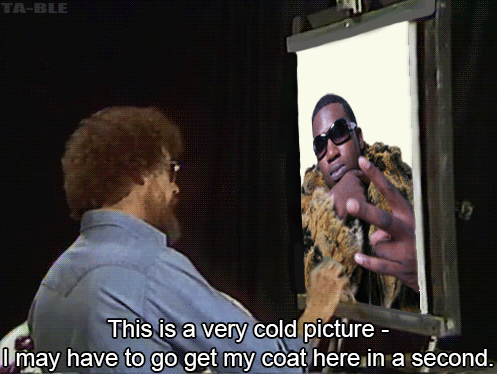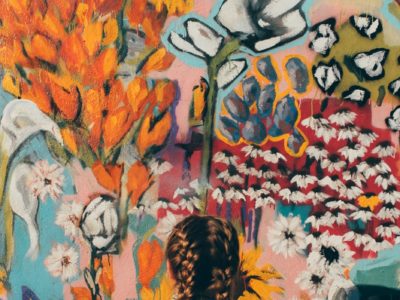So you’re thinking about an art major, and your friends and family might not be as excited about it as you are. You definitely don’t need to say anything to justify your decision, but if you want to, there are some amazing things you’ll gain from an art degree with which you can reassure them. You don’t even have to actually create art to have a major in the field–you could also opt for art history, arts education or arts administration.
What you’ll be doing

At most universities, art majors have to sample a few different types of art in beginner level classes (ceramics, drawing, painting, et cetera), but then they have the freedom to choose an area of focus. Sometimes this focus is an official specialization, but even without the label, making it to the advanced level classes of a particular form of art is considered mastering that craft. A few art history classes are sometimes mandatory for a general art degree as well.
Upsides

1. “Not having traditional homework. Projects were self-guided and not usually on a weekly basis, but you had lab time to get a lot of work done. The labs were open to us 24 hours a day, seven days a week, so you could work when you were able or when inspiration struck.” – Brittany Bruening, an art grad from UW-Madison.
2. “I think it’s a great way to learn critical thinking skills and visual analysis. No matter what you go into, business or marketing or something that’s actually in the art field, you’re going to have to use those skills. Having that kind of vocabulary and skill set is really important.” – Lauren Miller, an art history grad from UW-Madison.
3. “I loved it because it’s flexible. You can get a lot of varied skills out of it and you can make it what you want. For the career path that I wanted, there’s not really a set degree that you need to get, so I figured I would major in something that I loved. It’s helped me think outside the box, and now I’m working as a teacher and getting a master’s degree.” – Johnny Fuller, an art grad from Notre Dame.
Downsides

1. “It’s a little tricky getting out of the gate if you don’t know exactly what you want to do after you finish your degree. There are a lot of options out there, but you have to explore them a little.” – Callie Mangan, a UW-Madison alumna with a bachelor’s degree in art.
2. “I think there’s a kind of annoying stigma around it. People think ‘Oh, you’re getting an art degree. What are you going to do with that?’ Or your parents might not be so thrilled with your decision. You have to convince people that it’s worth it, [but] I think that actually makes you a better candidate because you’re used to having to market yourself to everyone.” – Lauren Miller, an art history grad from UW-Madison.
3. “Tough Love. Not everything you make, even if you are confident and proud of it, will receive praise. Some of my favorite pieces were torn apart in critique. It takes time to see that criticism as a positive experience to grow from.” – Brittany Bruening, an art grad from UW-Madison.
Career Opportunities

So you’ve made it through the grueling four (or five, or six) years of college and it’s time to get a job. Something art grads love about their degree is its versatility, and many art graduates end up working outside the definitive art field. So whether you want to be an illustrator for Pixar or an elementary social studies teacher, know that you have options and your art degree will help you get there.
1. Art director – This is one of the higher paying jobs in the field, and it usually happens in an agency. Art directors create art to supplement a client’s unique message, which often goes along with brand positioning and strategic marketing. To be a successful art director, you need to have stellar communication skills and the ability to bring your client’s abstract ideas to life. You’ll likely need a bachelor’s degree to land a job, and an additional degree in marketing definitely doesn’t hurt.
2. Graphic artist – Graphic artists can create products for almost anyone or anything: from magazines and books to websites and promotional material. Instead of creating something on paper, however, most of their work is done on a computer, so technical skills and experience in a wide range of artistic programs is a must. Like art directors, graphic artists also must have the ability to understand their client’s needs and visualize them, so communication skills are key.
3. Commercial artist – Commercial artists can work in many industries, including publishing, broadcasting, film, digital design and marketing. These artists use images to convey a commercial message. Technically, illustrators and graphic artists could also be considered commercial artists if they’re working in a profitable field. To get a job as a commercial artist, you usually need a degree, and you definitely need an impressive portfolio of your best work.
4. Art teacher – This job is pretty self-explanatory because we’ve all taken at least one art class in our lives. Art teachers instruct students from elementary all the way to university on the foundations of art and art history. Although most art teachers in these settings teach a wide range of techniques, they can certainly specialize and teach more advanced classes, especially in high school or college level art. Art teachers in elementary through high schools usually have a bachelor’s degree in art with an emphasis on education. Long story short: if you like art AND ruthless pubescents, this is the job for you.
5. Illustrator – Illustrators normally work in one specific medium, whether that be drawing, photography or graphic design. Keep in mind that a lot of illustrators freelance, which some shy away from due to the lack of security. However, freelance provides a freedom to move around that some people love. Illustrators have a wide variety of markets they can work in, including TV and film, editorial, advertising, fashion and more. You can also specialize in science, technical and medical illustration, where you would create illustrations for textbooks and reference books.




















